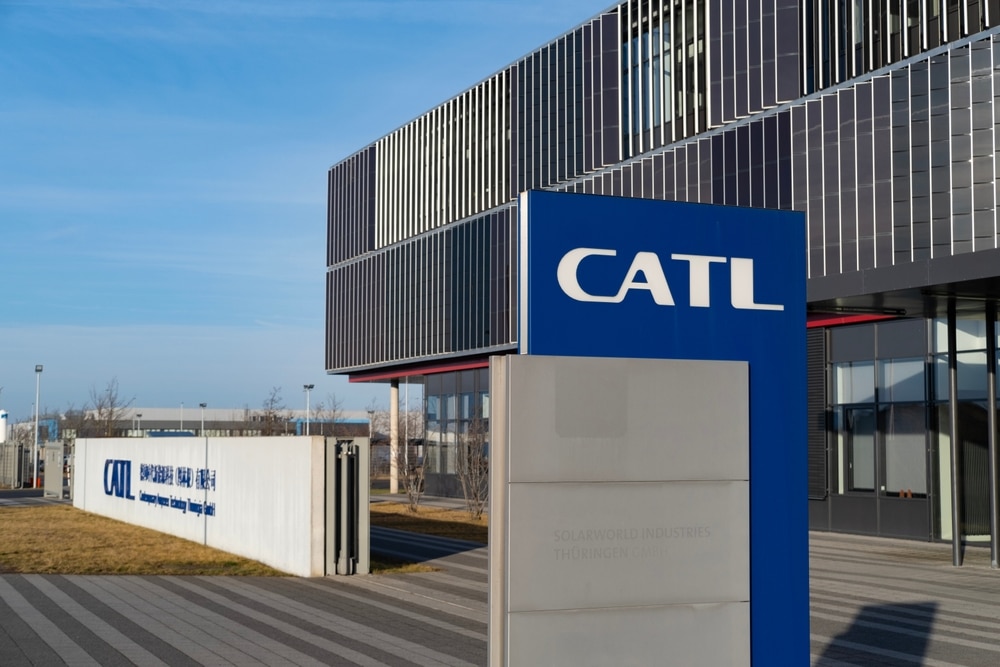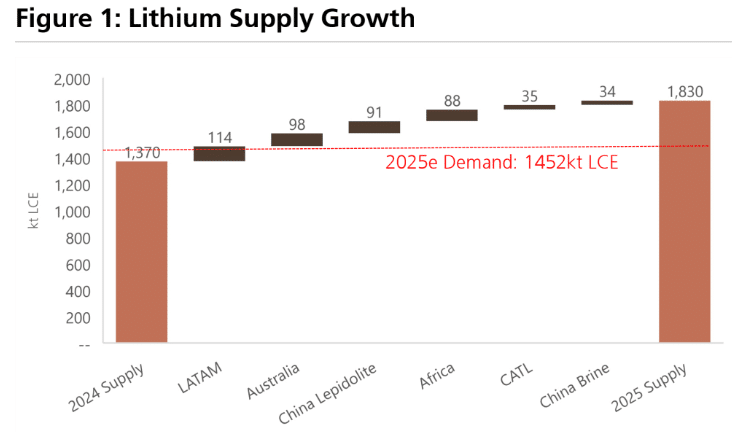Lithium spot prices have plummeted by around 90% since 2022, leading to vital mine closures and market shifts worldwide. However, CATL’s recent shutdown in Jiangxi, China, stands out as one of the most significant closures to date. What led to this decision, and how has it impacted the global lithium industry?
CATL Shuts Down Major Lithium Mine Amid Plunging Prices
Jiangxi province, located in southeastern China, accounts for about 5% to 6% of the global lithium supply. Despite its large reserves, CATL’s Jiangxi mine has faced financial strain due to rising production costs and falling prices. According to BMO (Bank of Montreal) analysts, mining lepidolite has become unprofitable because, despite its high lithium content, lepidolite is costly to convert into usable lithium.
CATL has remained competitive by utilizing its fully integrated business model, which includes refining, cathode active material (CAM) production, and battery manufacturing. However, the company could not sustain the current market pressure. The closure of this lepidolite mine, a key source of lithium carbonate, has caused significant disruptions in the market. Additionally, CATL is considering pausing one of its three lithium carbonate production lines in Jiangxi.
CATL’s Mine Closure and Its Global Impact: UBS Analysis
This news has garnered significant attention across the lithium market. According to UBS Lithium Analyst Sky Han, this mine accounts for roughly 5% of the world’s primary lithium supply and about 20% of China’s supply. The mine was expected to increase production from 60,000 tons of lithium carbonate equivalent (LCE) in 2024 to 95,000 tons in 2025, positioning it as the fifth-largest lithium mine globally.
While the closure is notable, it is not expected to drastically alter the overall market surplus for 2025. However, a tighter supply situation could develop if other lepidolite producers in China follow suit.
Experts believed that integrated lithium producers like CATL would navigate falling lithium prices effectively through their downstream operations. However, recent developments suggest that even vertically integrated companies might struggle in a low-price environment. Reports from China and Africa indicate that the challenges are substantial, with vertically integrated companies also facing difficulties.
Source: Wood Mackenzie, Company Filings, UBSe.
What Lies Ahead for Lithium Prices?
The suspension of the mine will reduce China’s monthly lithium carbonate output by 8%, or approximately 5,000 to 6,000 tons, according to UBS analysts. With reduced output from one of China’s largest mines, experts anticipate that lithium prices could stabilize, potentially offering relief to struggling producers. The significant cost outcomes include:
- Prices could stabilize between $10,000 and $11,000 per ton, reflecting global cash costs. The upper limit is driven by CATL’s cost base, estimated at $10,968 per ton.
- Conversion costs of around $3,000 per ton could push spodumene prices up to as high as $1,000 per ton in the near term, compared to current spot prices of about $730 per ton.
While CATL’s closure could positively impact pricing, more supply reductions will be necessary to address the anticipated market surplus in 2025. The evolving situation in China’s lepidolite supply will be crucial. Analysts remain cautious about the growth of Africa’s lithium supply, and the seaborne spodumene price, rather than the GFEX, will be critical for Australian lithium producers ramping up production.
For now, analysts recommend selling stocks like IGO, LTR, PLS, and Ganfeng, while maintaining a neutral stance on companies like Albemarle (ALB), Livent (LTM), and Tianqi. They are more optimistic about Qinghai Salt Lake and PMET. Falling lithium prices have led to mine closures and project delays globally.
The mine in Yichun City, Jiangxi province, had significantly boosted China’s lithium supplies. Now, CATL faces the difficult decision to cut back.
CATL’s Move Drives Stock Surge
CATL’s decision has already impacted the global market. Contrary to expectations, shares of several global lithium companies have seen gains. Furthermore, the closure has eased oversupply concerns, leading to a surge in lithium prices and a boost in stock performance for producers around the world. For instance, Bloomberg reported that shares of Albemarle jumped as much as 17% in New York, while SQM saw a 12% rise. In Australia, Pilbara Minerals Ltd. shot up by 16%, and Tianqi Lithium Corp. climbed by 16% in Hong Kong.
Following the CATL announcement, lithium carbonate futures on the Guangzhou Futures Exchange rose by 5.5%, hitting 76,700 yuan per ton ($10,700), although they remain down 27% for the year.
Several lithium producers in Australia, including Arcadium Lithium Plc and Core Lithium Ltd., have shut down high-cost sites due to plummeting prices. Global Lithium Resources Ltd. is reducing costs at its promising project as it faces a longer-than-expected price slump. Additionally, Albemarle has paused its global expansion plans in response to the ongoing price drop. This was reported by Bloomberg.
Source: Bloomberg
Analysts from Guotai Junan Securities Co. predict that lithium prices might rebound by 2026, and lithium stocks could start rising six to nine months before the commodity’s price improves.
In conclusion, as lithium prices continue to plunge, CATL’s actions are crucial for stabilizing the supply chain. The company is adjusting its operations to navigate the tough market conditions, hinting at possible shifts in the industry’s lithium production strategies in the coming months.
- FURTHER READING: CATL Unveils Ambitious 2,000 km Electric Plane Vision




